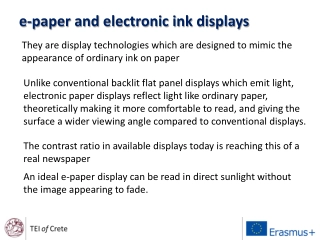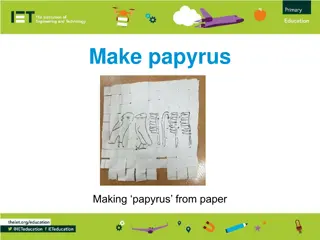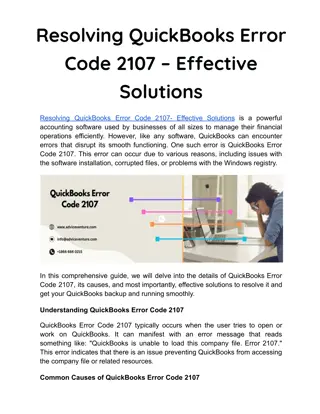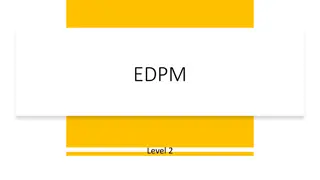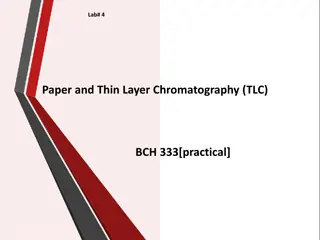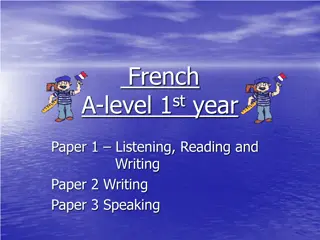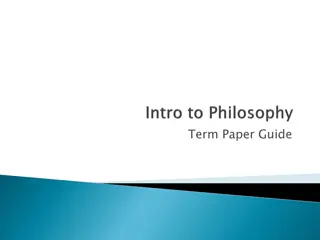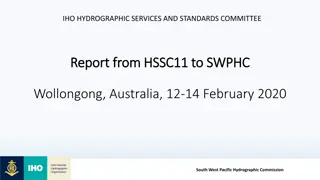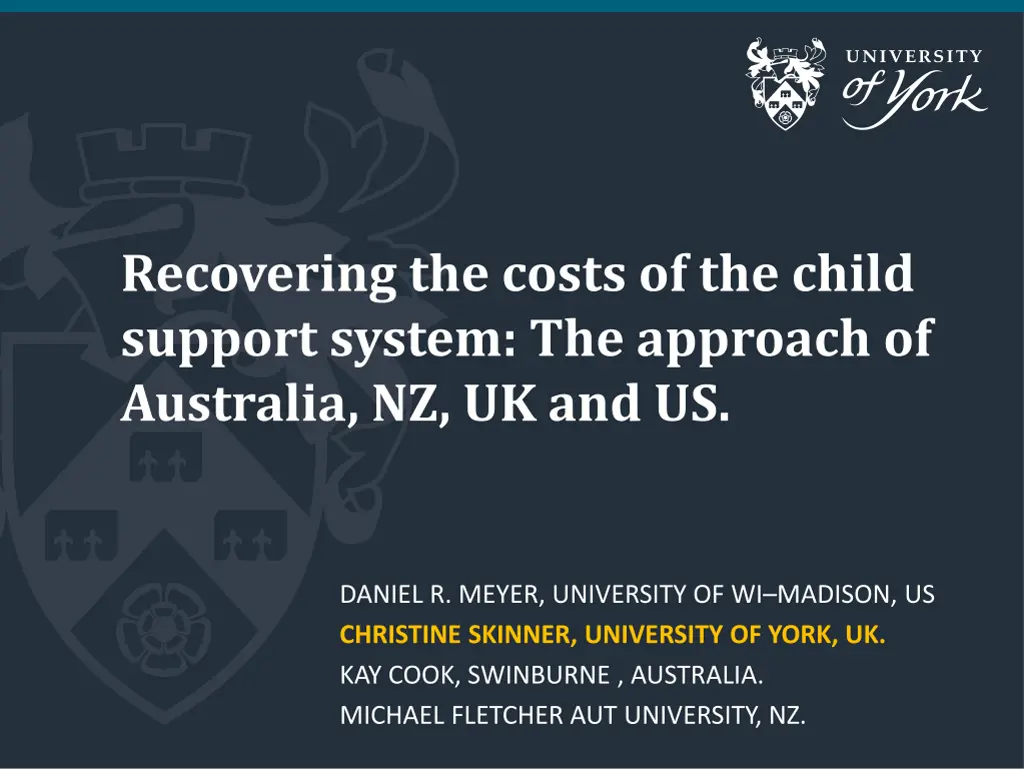
Understanding Child Support Systems in Different Countries
Explore the research project comparing Child Support schemes in Australia, NZ, UK, and US, focusing on cost recovery mechanisms and government perspectives. Delve into the interactions of child support payments with social assistance programs and the varied approaches across countries.
Download Presentation

Please find below an Image/Link to download the presentation.
The content on the website is provided AS IS for your information and personal use only. It may not be sold, licensed, or shared on other websites without obtaining consent from the author. If you encounter any issues during the download, it is possible that the publisher has removed the file from their server.
You are allowed to download the files provided on this website for personal or commercial use, subject to the condition that they are used lawfully. All files are the property of their respective owners.
The content on the website is provided AS IS for your information and personal use only. It may not be sold, licensed, or shared on other websites without obtaining consent from the author.
E N D
Presentation Transcript
Recovering the costs of the child support system: The approach of Australia, NZ, UK and US. DANIEL R. MEYER, UNIVERSITY OF WI MADISON, US CHRISTINE SKINNER, UNIVERSITY OF YORK, UK. KAY COOK, SWINBURNE , AUSTRALIA. MICHAEL FLETCHER AUT UNIVERSITY, NZ.
Introduction Research project comparison Child Support (CS) schemes 4 countries. Child Support definition Cost recovery and the interest of the state Three parts to research project: 1. Child maintenance and social security interactions: the poverty reduction effects in model lone parent families across four countries. Journal of Social Policy 2017 ,Vol 46 (3) (focuses on effects on lone-parent poverty). We found that through different cost recovery mechanisms CS was treated as: 1. A substitute for social security benefits 2. Or as a complement to for social security benefits
Introduction Part 2: of project - Analysis focuses on effects of cost recovery mechanisms on government revenues. Part 3: in progress will focus on whether/how governments rationalize their CS regimes. Part 2: explore the state s perspective. Look at range cost recovery mechanisms used by the state. 3 Types: 1.EXPLICIT mechanisms 2.IMPLICIT mechanisms, complex 3.FEES charging to use CS system
Big Questions How do child support payments interact with other governmental social assistance programmes in different countries? What cost recovery mechanisms are used? What does the state gain in cost recovery? What differences in approaches across countries with ostensibly similar CS systems?
Why Australia, NZ, UK and US? All Agency systems use formulae/ rules to set CS Explicit policy transfer: UK modelled on US- Wisconsin; NZ modelled on Australia. Similar policy drivers and histories: Increase in lone parent families Rise in fiscal costs support lone parents Initial principle of cost recovery (CS paid on behalf of children receiving benefits should be used to offset government costs) All started their child support schemes focused on cost recovery, but policy has now diverged.
Method Vignette Good technique (model families) - detail few cases. Standardises context - easier comparison We explore how much: a)CS the state passes through to low income cases (lone parent one child). b)CS the state claws back in interactions with social assistance benefits. c)Fees are charged, and to whom. Thus the value of fees to the state. d) How the cost recovery mechanisms work in combination in the 4 countries and their total value as a % of CS
Vignette Family Mary & Paul: 1 child (Peter) Neither has other children Live in rented accommodation (~ bottom quartile rental) Explore 10 scenarios they vary by Mary and Paul s earnings; with and without CS
10 Scenarios within Vignette Mary Paul CS A B C D E F G H I Unemployed Median PT earnings 2/3 Median FT earnings Unemployed Unemployed 2/3 median earnings Median earnings 2/3 median earnings 2/3 median earnings Median earnings 2/3 median earnings 2/3 median earnings No Yes Yes Yes No Yes Yes No Yes J Median earnings Yes
Expected child support amounts - PPP $US
3 Types cost recovery mechanisms Mary has no earnings (Scenarios B-D) 1. Low child support (Scenario B) % Child Support recovered by the state AU NZ UK US 100% c 100% c 5.5% a 0.9% a 0.6% a 71.8% d 73.4% d 72.6% d 0% 27.0% b 41.4% b 100% c 2. Moderate child support (Scenario C) 3. High child support (Scenario D) Mary has part-time earnings (Scenarios F-G) 4. Moderate child support (Scenario F) 26.9% b 41.1% b 100% b 100% b 0.9% a 0.6% a 50.7% e 59.9% e 5. High child support (Scenario G) Mary has full-time earnings (Scenarios I-J)* 6. Moderate child support (Scenario I) 27.2% b 41.0% b 28.4% b 25.0% b 0.9% a 0.6% a 30.9% e 32.4% e 7. High child support (Scenario J)
Cost recovery approaches Implicit Only: Australia Implicit & Explicit: New Zealand Fees Only: UK Implicit, Explicit & Fees: US Wisconsin
Conclusion Advantages and disadvantages different approaches? We don t know for sure data limited. We suggest: If NO cost recovery i.e. parent keeps it all: Other parent more likely to pay. Reduces debt and debt recovery costs Less conflict between parents Better family relationships for children If YES cost recovery State make some savings State increased costs in more debt recovery Parents nudged into informal agreements (Fees) Parental conflict increased Lone parent poverty increased Greater injustice between rich and poor legitimacy issues for CS
Limitations Only one family type limited scenarios (7) Assumes CS fully paid, SA benefits fully received Ignores behavioural effects (work incentives) No information on how these approaches are working in real cases Need to explore: Whether and how approaches are rationalised in policy making?


